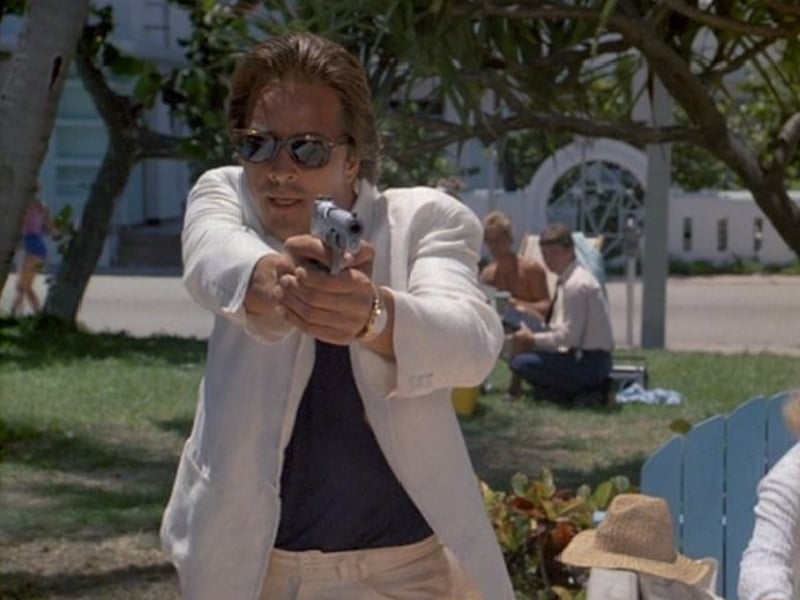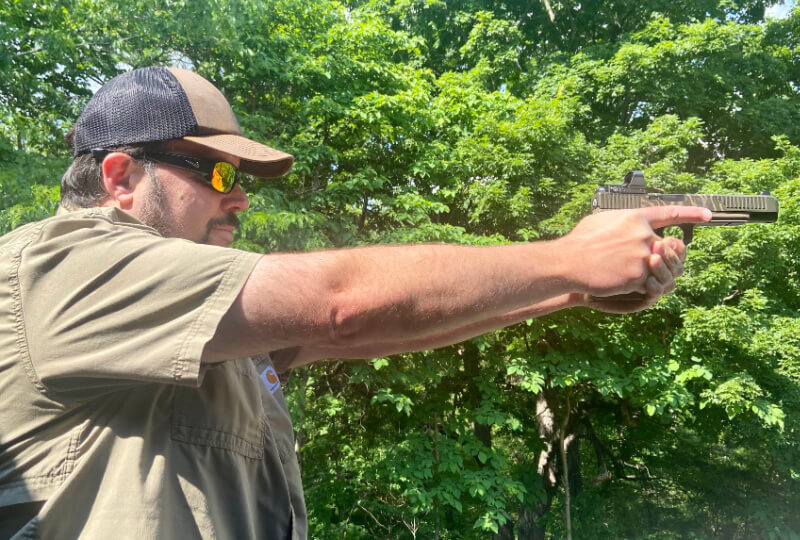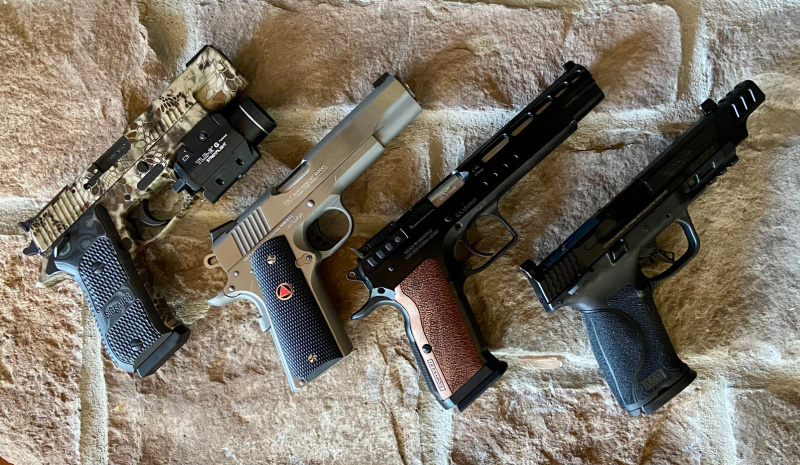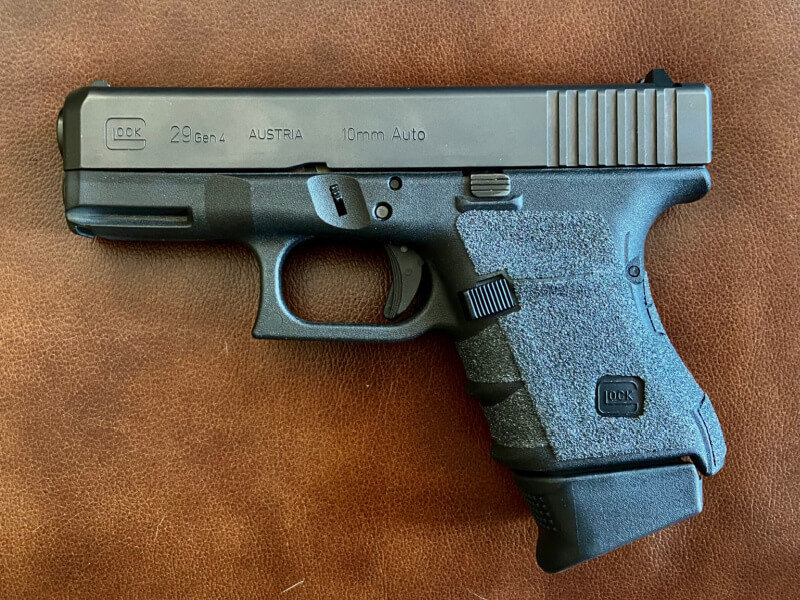The 10mm Automatic (10X25mm) was developed in 1983 specifically to provide the energy of a magnum revolver round in a semi-automatic pistol. Originally only chambered by the Dornaus & Dixon Enterprises’ Bren Ten, the round’s fate was initially tied to the gun’s success. Unfortunately, the high relative cost of the Bren Ten, magazine issues, and inconsistent availability resulted in the Bren Ten ceasing production just three years later in 1986.
The 10mm teetered on the brink of becoming a forgotten round except for two factors. One was the use of a Bren Ten by the character Sonny Crockett in the television show Miami Vice, further exposing the 10mm to the world (which is where I first learned of the round). Two, Colt decided to release the Delta Elite, a 1911 chambered in 10mm in 1987. Production continued through to 1996 and was then rereleased from 2009 to the present.

The adoption by the FBI of the 10mm round further cemented its overall acceptance. The aftermath of the FBI Miami shootout in 1986, in which Federal agents were outgunned, included the FBI seriously reconsidering the choice of agent firearms. Many cite this event as the watershed moment in transitioning law enforcement from revolvers to higher capacity semi-automatics, but the FBI was also looking to upgrade the round their agents used.
After a series of tests, the 10mm was adopted by the FBI in 1989. Though the round met the ballistic requirements of the FBI, many agents struggled with the larger grip size required for the round and the greater felt recoil. These issues first led to a 10mm lite round designed to be less powerful and eventually the 1990 release of the shorter .40 Smith and Wesson (10X22mm) round that could be chambered in handguns with similar grip dimensions as the 9mm (9X19mm). By 1997 the FBI had transitioned to the .40 S&W adopting the Glock 22.

Although law enforcement use of the 10mm fell off in the 1990s replaced by the .40 S&W, the round had made enough of an impact to remain in some use. The 10mm remained the caliber of choice in some departments and groups, had been adopted as a handgun hunting round, and had its fair share of advocates in the civilian world. Starting in approximately 2015 there began a notable increase in handguns chambered in 10mm with various companies releasing new 10mm pistols at a rate of about one a year and seeing a further increase in releases in 2022 and 2023.
The 10mm Today
Today there are many firearms manufacturers offering guns chambered in 10mm including Glock, Kimber, Colt, Smith and Wesson, Sig Sauer, FN, Springfield, and Ruger. Many of these such as the Colt Delta Elite, Sig Sauer P220, Kimber RAPIDE, Springfield Ronin 1911, and Tanfoglio Witness Hunter are heavier and larger metal-framed guns. This combination of larger size and weight assists in reducing the felt recoil of the 10mm.
However, there are also many polymer 10mm handguns both larger and smaller including the Glock 20, 29, and 40, FN 510 Tactical, Smith & Wesson M&P M2.0, and Springfield’s XD-M Elite series. The result is that there are 10mm handguns designed for easy concealment such as the Glock 29 and ranging up to 5”+ barrels for handgun hunting such as the Kimber Camp Guard or Glock 40. All indications suggest that the 10mm is here to stay and is making a comeback in civilian use.

The Ballistics of 10mm
The original intent of the 10mm was to provide similar ballistics of a magnum revolver round in a higher capacity semi-automatic. The following ballistic comparisons should be evaluated, noting that such comparisons are examining ballistic factors in a vacuum, and that ‘real world’ ballistics involves many additional factors. That said, for the purposes of this comparison several objective factors were examined such as bullet weight (grains), feet per second(fps) at muzzle, power (ft. lb. — bullet grain multiplied by velocity squared divided by 450,437), capacity (number of rounds), and total power (Power ft. lb. multiplied by capacity).
Data taken from various sources (with most of the data drawn from Ellifritz in 2011) were used to determine the average power ft. lb. needed to result in a physiological stop — violent actions ceased due to incapacitation. This number varied across common defensive calibers from 420.75 at the lowest end to 1135.00 at the higher end. These averages were created looking across calibers at emergency room data of successful hits in real-world shootings resulting in a physiological stop and assuming an average weight of caliber examined. This yielded an
average needed power ft. lb. of ~800 to result in a physiological stop. This number was then used to provide a metric based on the power ft. lb. of each round to determine the average number of rounds needed to obtain a physiological stop. Capacity was then divided by this number and rounded down to give the total stops contained within a loaded gun of the type evaluated.
All these numbers are presented in Table 1 comparing full frame Glocks chambered in 10mm, .40 S&W, and 9mm and revolvers chambered in .357 Magnum, .38 Special, and .44 Magnum included for further comparison.

Though drawn from and averaged across data, the power required for a physiological stop is an estimate allowing for another way to address the questions of handgun stopping power. Total power gives a quick metric of comparing power and capacity in each firearm. Total number of stops gives a quick metric of how many individuals (on average) could be physiologically stopped (assuming all accurate hits). Even if these estimates are close to reality (which is what I hope as it is based on the best data I could find on the subject) it should be noted that they are
still averages. There are countless cases of a single round of any caliber resulting in a ‘one shot stop’ usually involving death. Similarly, there are cases of individuals surviving and even fighting through hit after hit of a larger caliber.
Conclusions and Caveats
Looking at the table the argument for 10mm (assuming a similar level of accuracy and speed with the round) is clear. Only the .44 magnum comes out better on most metrics, but with generally a maximum of six rounds, a loaded .44 magnum revolver has slightly under half of the
overall ‘stops’ compared to a semi-automatic 10mm.
The assumption of similar accuracy and speed, however, is a huge one. I personally carried the Glock 20 (outside the waistband) and Glock 29 (inside the waistband) both chambered in 10mm until my late 40’s. The slight reduction in rounds was a small price to pay for the greater physiological stopping power. This was further balanced with active testing during practice where my accuracy and speed with 10mm Glocks was no different from my speed and accuracy with the 9mm versions (Glock 17 and 26) at most defensive distances.
As my late 40s turned into my early 50s I felt my overall grip strength weaken (just a little). As a result, at some time in 2018-2019 my accuracy and speed started to show some differences when shooting 10mm compared to 9mm. Around 2020 I switched to 9mm (Glock 17 and 26) as the advantages in power with the 10mm were being nullified by my no longer being able to control the recoil as I once had.

Finally, power is not the only factor when thinking about self-defense, and many would argue it is not even that important of a factor. Additional considerations such as shot placement (accuracy) and ability to get multiple rounds on target (speed) will generally trump caliber or ballistic power.
I am often asked what caliber should I carry. My answer has not changed much in 30 years. Carry the largest round you can reliably, quickly, and accurately shoot and are likely to continue to practice regularly with. This philosophy is what originally brought me to carrying 10mm and it is also the philosophy that resulted in my shifting to 9mm more recently.


